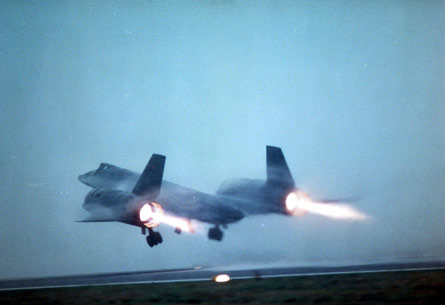The US Air Force has revealed the existence of the RQ-170 Sentinel, a stealthy, jet-powered unmanned aircraft system manufactured by Lockheed Martin. The Sentinel is the latest of a long and distinguished line of black projects unexpectedly revealed to the public.
Two lessons from this disclosure are immediately apparent. In the absence of social media, it is worth pondering whether the USAF would have been forced to unshroud the Sentinel at this time. Second, within weeks of the 20th anniversary of toppling of the Berlin Wall, the Sentinel's disclosure presents a startling reminder of the relevance of ultra-secret rapid prototyping shops.
 |
|---|
© Denis Cameron/Rex FeaturesSkunk projects go far beyond headline aircraft like SR-71 |
The Sentinel was exposed after photos all but confirmed its existence. It began last May with a published sketch of the aircraft from behind. Weeks later, a blurry photo of a similar-looking aircraft in flight appeared. Finally, a French newspaper's blog published a clear image of the Sentinel on a runway, reportedly in Kandahar.
Within a week of the third image's appearance, the USAF bowed to the inevitable, publishing a statement announcing the developmental RQ-170 is currently supporting deployed forces.
All throughout the process, interest in the so-called "Beast of Kandahar" was kept alive on blogs and online discussion forums. Undoubtedly, the speculation prompted waves of forgettable comments, but the aircraft's existence itself was impossible to forget. It's worth considering how long the Sentinel would have remained classified in the absence of such public pressure, or which previously black programs could have withstood such sustained scrutiny. The Sentinel's disclosure may be a product of modern media, but its existence is thanks to a timeless - but too often unappreciated - feature of the aerospace industry.
Lockheed's famous Skunk Works is not just about what some might be excused for starting to believe over the past decade, where it has struggled to remain relevant far removed from a Cold War adversary. Skunk Works, as it turns out, does not still exist to work on a few seemingly grandiose projects that exist only on Powerpoint slides and appear to make little sense for both the budget and security environment.
Rather, Skunk Works and its imitators remain what Clarence "Kelly" Johnson originally intended. They are still needed to incubate the talent and skills that can produce in secret a completely new kind of operational aircraft - a stealthy jet-powered UAV, which has existed only as prototypes in public until now.
Source: Flight International























